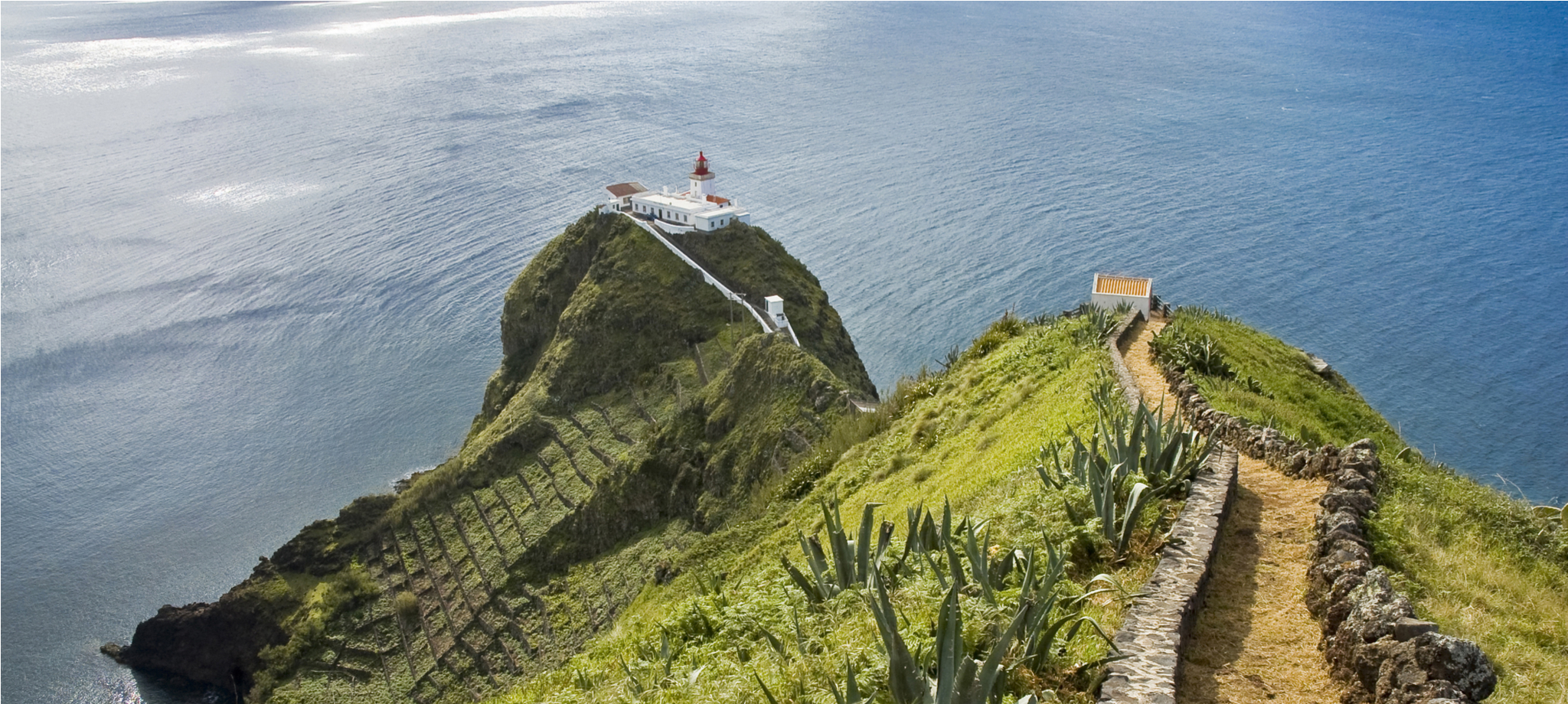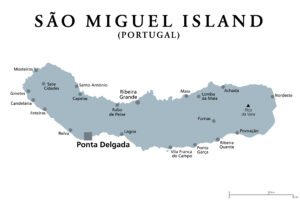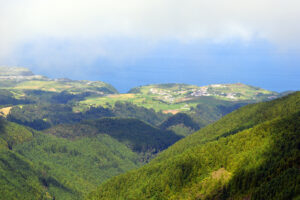Exploring the geography of São Miguel Island in the Azores
São Miguel is the largest and most populous island in the Azores archipelago and offers a unique blend of volcanic terrain, lush greenery, and picturesque coastal views. Here’s a closer look at the geography of this remarkable island.
How big is São Miguel Island?
São Miguel covers a land area of approximately 291 square miles (759 km²), making it the largest island in the Azores. The island stretches about 40 miles (65 km) in length from east to west, and at its widest point, it measures about 10 miles (16 km) across. Geographically, São Miguel is situated at 25º 30′ West longitude and 37º 50′ North latitude, placing it in the heart of the North Atlantic Ocean, roughly 930 miles (1,500 km) west of mainland Portugal.
Primary cities
The island has six municipalities, each of which contains several cities, towns, and villages. The primary cities on the island are:
- Ponta Delgada – The capital and largest city, located on the southwestern coast.
- Ribeira Grande – Located on the northern coast, it’s the second-largest city and a significant cultural and economic center.
- Lagoa – Situated to the east of Ponta Delgada, known for its coastal views and historical sites.
- Vila Franca do Campo – Located on the southern coast, it was the original capital of São Miguel before being replaced by Ponta Delgada after a devastating earthquake in 1522.
- Nordeste – Located in the northeastern part of the island, it’s known for its scenic beauty and rural charm.
- Povoação – Located in the southeast, it’s historically significant as the first settlement on the island.
How long does the drive through São Miguel take?
Exploring São Miguel by car is one of the best ways to experience the island’s diverse landscapes and attractions. The island’s relatively small size means that you can drive around the entire island in about 3 to 4 hours, depending on stops and detours to explore various sites. The main roads are well-maintained and offer scenic views of the coastline, mountains, and volcanic craters. However, given the island’s many things to do and see, including its charming towns, natural parks, and lookout points, visitors often spend several days exploring São Miguel at a leisurely pace.
Population and capital
São Miguel is the most populous island in the Azores, with a population of approximately 140,000 residents. The island’s population is concentrated mainly in Ponta Delgada, the capital of São Miguel and the largest city in the Azores. Ponta Delgada serves as the political, economic, and cultural hub of the island, offering a blend of historic architecture, modern amenities, and festivals.
Volcanic origins and topography
The island is of volcanic origin, which is evident in its dramatic landscapes and natural features. The island is composed of two main volcanic massifs separated by a central ridge with lower altitude. The western massif is home to the famous Sete Cidades caldera, while the eastern massif includes the peaks of Furnas and Pico da Vara.
At azores.com we have tour packages that include exploring these natural wonders. Check these packages: Hiking Trail Tour, Self-Drive São Miguel or Private Guided Tour.
Pico da Vara: the highest point in São Miguel
Pico da Vara, located in the eastern massif, is the highest point on São Miguel, rising to an altitude of 3,545 feet (1,103 meters). This peak is a popular destination for hikers, offering breathtaking views of the island’s rugged terrain and the surrounding Atlantic Ocean. The area around Pico da Vara is part of a natural reserve, which protects the island’s endemic flora and fauna.
Sete Cidades, Fogo, and Furnas: the iconic crater lakes
One of the most striking features of São Miguel is its series of volcanic craters, which have evolved into beautiful lakes. The Sete Cidades caldera, located in the western part of the island, is perhaps the most iconic. It contains two interconnected lakes—Lagoa Azul (Blue Lake) and Lagoa Verde (Green Lake)—which are renowned for their distinct colors and tranquil beauty.
Lagoa do Fogo (Fire Lake), situated in the central massif, is another stunning crater lake. Known for its pristine waters and surrounding natural reserves, Lagoa do Fogo is a protected area that remains largely untouched, offering visitors a serene escape.
In the eastern massif, the Furnas caldera is home to the Furnas Lake, a picturesque body of water surrounded by lush vegetation and geothermal activity. This area is famous for its hot springs, fumaroles, and the traditional Cozido das Furnas, a dish cooked underground using volcanic heat.



